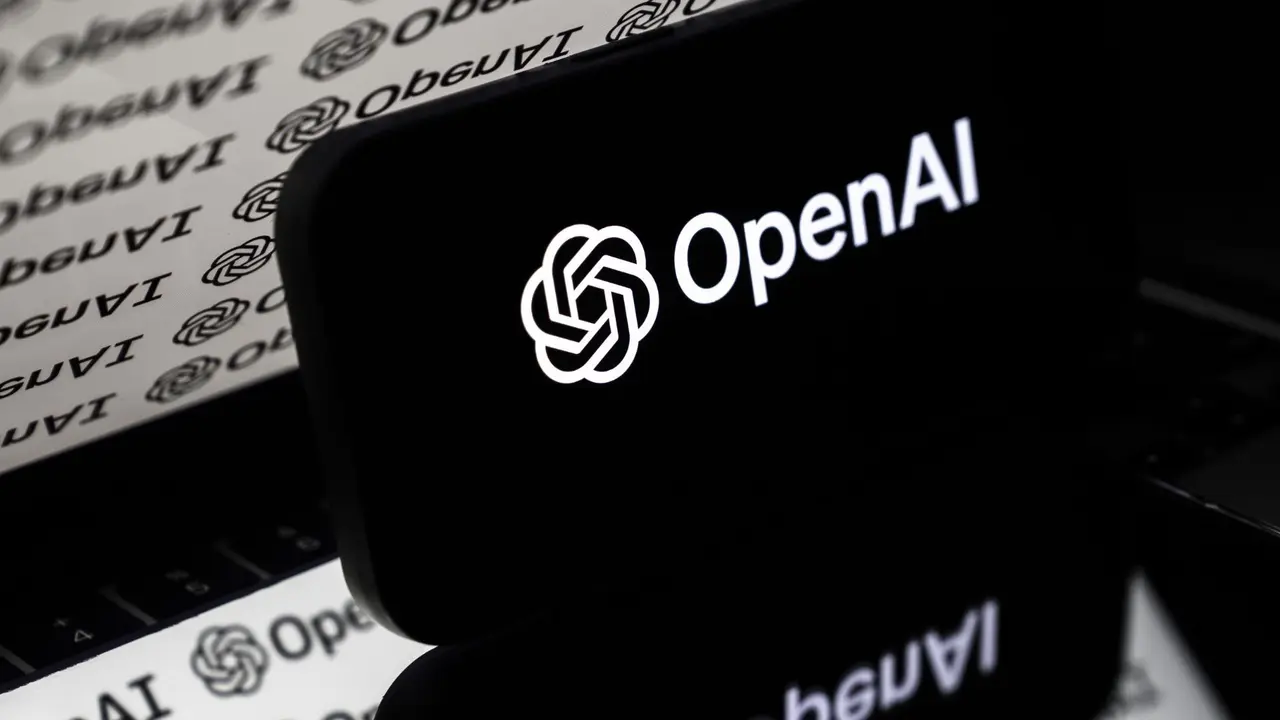AI-Powered PandemicLLM Revolutionizes Infectious Disease Forecasting
2 Sources
2 Sources
[1]
New AI tool revolutionizes forecasting of disease outbreaks
Johns Hopkins UniversityJun 6 2025 A new AI tool to predict the spread of infectious disease outperforms existing state-of-the-art forecasting methods. The tool, created with federal support by researchers at Johns Hopkins and Duke universities, could revolutionize how public health officials predict, track and manage outbreaks of infectious diseases including flu and COVID-19. "COVID-19 elucidated the challenge of predicting disease spread due to the interplay of complex factors that were constantly changing," said author Lauren Gardner of Johns Hopkins, a modeling expert who created the COVID-19 dashboard that was relied upon by people worldwide during the pandemic. "When conditions were stable the models were fine. However, when new variants emerged or policies changed, we were terrible at predicting the outcomes because we didn't have the modeling capabilities to include critical types of information. The new tool fills this gap." The work is newly published in Nature Computational Science. During the coronavirus pandemic, the technology that underpins the new tool didn't exist. The team for the first time uses large language modeling, the type of generative AI used most famously in ChatGPT, to predict the spread of disease. Instead of treating prediction merely like a math problem, the model, which is named PandemicLLM, reasons with it, considering inputs such as recent infection spikes, new variants, and mask mandates. The team fed the model streams of information, including data never used before in pandemic prediction tools, and found PandemicLLM could accurately predict disease patterns and hospitalization trends one to three weeks out, consistently outperforming other methods including the highest performing ones on the CDC's CovidHub. A pressing challenge in disease prediction is trying to figure out what drives surges in infections and hospitalizations, and to build these new information streams into the modeling." Lauren Gardner of Johns Hopkins The model relies on four types of data: State-level spatial data including information on demographics, the healthcare system and political affiliations. Epidemiological time series data such as reported cases, hospitalizations and vaccine rates. Public health policy data including stringency and types of government policies. Genomic surveillance data including information about the characteristics of disease variants and their prevalence. After consuming this information, the model can predict how the various elements will come together to affect how the disease behaves. To test it, the team retroactively applied it to the COVID-19 pandemic, drilling down on each U.S. state over 19 months. Compared to other models, the new tool was particularly successful when the outbreak was in flux. "Traditionally we use the past to predict the future," said author Hao "Frank" Yang, a Johns Hopkins assistant professor of Civil and Systems Engineering who specializes in developing reliable AI. "But that doesn't give the model sufficient information to understand and predict what's happening. Instead, this framework uses new types of real-time information." With the necessary data, the model can be adapted for any infectious disease, including bird flu, monkeypox and RSV. The team is now exploring the capability of LLMs to replicate how individuals make decisions about their health, hoping such a model would help officials design safer and more effective policies. "We know from COVID-19 that we need better tools so that we can inform more effective policies," Gardner said. "There will be another pandemic, and these types of frameworks will be crucial for supporting public health response." Authors included: Johns Hopkins PhD student Hongru Du; Johns Hopkins graduate student Yang Zhao; Jianan Zhao of University of Montreal; Johns Hopkins PhD student Shaochong Xu, Xihong Lin of Harvard University and Duke University Prof. Yiran Chen. Johns Hopkins University Journal reference: Du, H., et al. (2025). Advancing real-time infectious disease forecasting using large language models. Nature Computational Science. doi.org/10.1038/s43588-025-00798-6.
[2]
New AI tool reimagines infectious disease forecasting, outperforms existing state-of-the-art methods
An AI tool, created by researchers at Johns Hopkins and Duke universities, could revolutionize how public health officials predict, track and manage outbreaks of infectious diseases including flu and COVID-19. "COVID-19 elucidated the challenge of predicting disease spread due to the interplay of complex factors that were constantly changing," said author Lauren Gardner of Johns Hopkins, a modeling expert who created the COVID-19 dashboard that was relied upon by people worldwide during the pandemic. "When conditions were stable, the models were fine. However, when new variants emerged or policies changed, we were terrible at predicting the outcomes because we didn't have the modeling capabilities to include critical types of information. The new tool fills this gap." The work is published in Nature Computational Science. During the coronavirus pandemic, the technology that underpins the new tool didn't exist. The team for the first time uses large language modeling, the type of generative AI used most famously in ChatGPT, to predict the spread of disease. Instead of treating prediction merely like a math problem, the model, which is named PandemicLLM, reasons with it, considering inputs such as recent infection spikes, new variants, and mask mandates. The team fed the model streams of information, including data never used before in pandemic prediction tools, and found PandemicLLM could accurately predict disease patterns and hospitalization trends one to three weeks out, consistently outperforming other methods, including the highest performing ones on the CDC's COVIDHub. "A pressing challenge in disease prediction is trying to figure out what drives surges in infections and hospitalizations, and to build these new information streams into the modeling," Gardner said. The model relies on four types of data: After consuming this information, the model can predict how the various elements will come together to affect how the disease behaves. To test it, the team retroactively applied it to the COVID-19 pandemic, drilling down on each U.S. state over 19 months. Compared to other models, the new tool was particularly successful when the outbreak was in flux. "Traditionally we use the past to predict the future," said author Hao "Frank" Yang, a Johns Hopkins assistant professor of Civil and Systems Engineering who specializes in developing reliable AI. "But that doesn't give the model sufficient information to understand and predict what's happening. Instead, this framework uses new types of real-time information." With the necessary data, the model can be adapted for any infectious disease, including bird flu, monkeypox and RSV. The team is now exploring the capability of LLMs to replicate how individuals make decisions about their health, hoping such a model would help officials design safer and more effective policies. "We know from COVID-19 that we need better tools so that we can inform more effective policies," Gardner said. "There will be another pandemic, and these types of frameworks will be crucial for supporting public health response."
Share
Share
Copy Link
Researchers at Johns Hopkins and Duke universities have developed a new AI tool called PandemicLLM that outperforms existing methods in predicting and tracking infectious disease outbreaks, potentially transforming public health management.
Breakthrough in Disease Forecasting
Researchers at Johns Hopkins and Duke universities have developed a groundbreaking AI tool that promises to revolutionize the prediction and management of infectious disease outbreaks. The new model, named PandemicLLM, utilizes large language modeling to forecast disease spread with unprecedented accuracy
1
.Advanced AI Methodology
Unlike traditional forecasting methods, PandemicLLM employs the same type of generative AI technology used in ChatGPT. This approach allows the model to reason with complex data inputs, including recent infection spikes, new variants, and policy changes such as mask mandates
2
.Comprehensive Data Integration

Source: Medical Xpress
The model's strength lies in its ability to process four key types of data:
- State-level spatial data (demographics, healthcare system, political affiliations)
- Epidemiological time series data (reported cases, hospitalizations, vaccine rates)
- Public health policy data (government policy types and stringency)
- Genomic surveillance data (disease variant characteristics and prevalence)
By integrating these diverse data streams, PandemicLLM can predict how various factors will interact to influence disease behavior
1
.Superior Performance
In tests retroactively applied to the COVID-19 pandemic, PandemicLLM demonstrated superior performance compared to existing models, particularly during periods of flux in the outbreak. The tool accurately predicted disease patterns and hospitalization trends one to three weeks in advance, consistently outperforming other methods, including the highest-performing ones on the CDC's COVIDHub
2
.Implications for Public Health
Lauren Gardner, a modeling expert from Johns Hopkins who was involved in creating the COVID-19 dashboard, emphasized the tool's potential to address critical gaps in existing forecasting capabilities. "COVID-19 elucidated the challenge of predicting disease spread due to the interplay of complex factors that were constantly changing," Gardner stated
1
.Related Stories
Versatility and Future Applications
While initially tested on COVID-19 data, the researchers assert that PandemicLLM can be adapted for any infectious disease, including bird flu, monkeypox, and RSV, given the necessary data inputs
2
.Ongoing Research

Source: News-Medical
The team is now exploring the potential of large language models to simulate individual health decision-making processes. This research aims to assist officials in designing more effective and safer public health policies
1
.As the world prepares for future pandemics, tools like PandemicLLM are poised to play a crucial role in supporting public health responses and informing policy decisions. The successful development and implementation of such advanced forecasting models represent a significant step forward in our ability to predict, track, and manage infectious disease outbreaks.
References
Summarized by
Navi
[1]
Related Stories
AI Advances Promise to Transform Pandemic Preparedness and Response
20 Feb 2025•Science and Research

AI Model Identifies Undetected Bird Flu Exposure Risks in Emergency Departments
26 Aug 2025•Technology

AI Tool Predicts Virus Outbreak Hotspots, Enhancing Pandemic Prevention Efforts
01 Apr 2025•Science and Research

Recent Highlights
1
AI Chatbots Sway Voters More Effectively Than Traditional Political Ads, New Studies Reveal
Science and Research

2
Google AI glasses set to launch in 2026 with Gemini and Android XR across multiple partners
Technology

3
EU Launches Antitrust Probe Into Google's AI Training Practices and Content Usage
Policy and Regulation




